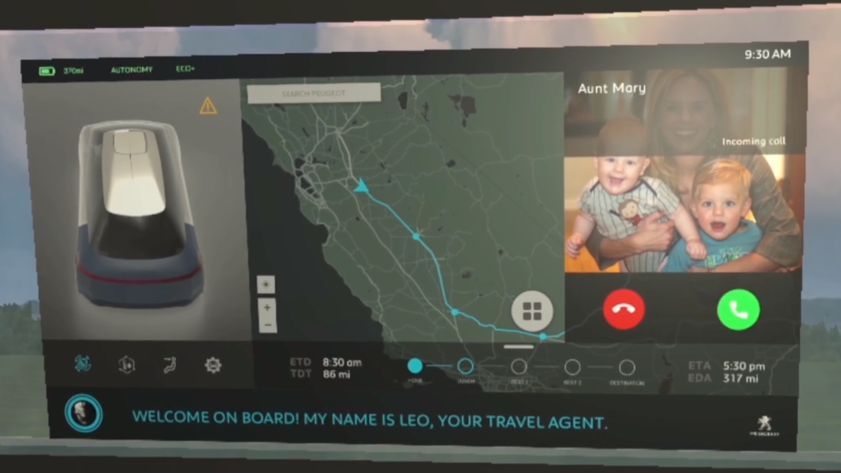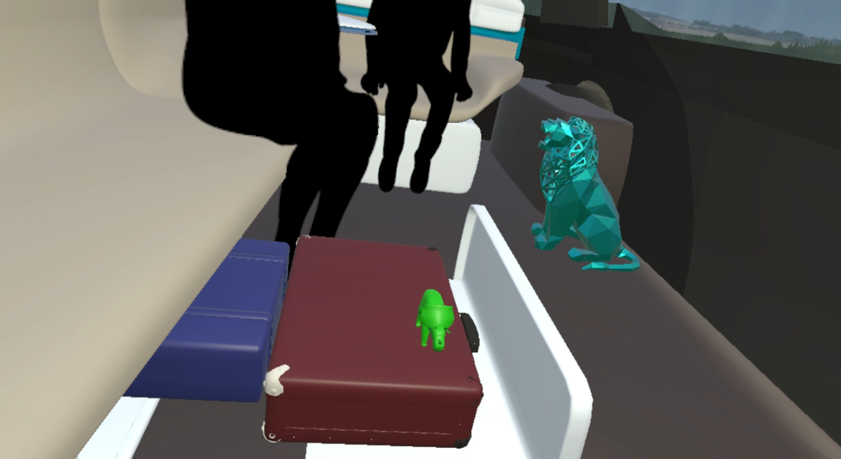Our Story
What would a family road trip look like in 2030+?
Artificial Intelligent, Autonomous driving, and Mixed reality are the emerging technologies that are now utilized throughout the mobility services. Team Leo presents the future agentive mobility service for the family road trip 2030+.
PROJECT BRIEF
Transdisciplinary Studio Project
sponsored by PSA Peugeot
January 2019, the PSA Peugeot design team came to ArtCenter to ask us how would Peugeot play a unique role in the future mobility industry. I participated in this project as an Interaction Designer to come up with an inspiring future scenario. Collaboration with the ArtCenter Grad Transportation Design students, my key role was to lead the storyboarding, prototyping with emerging technologies such as VR, AR, and Agentive technologies as well as UI elements.
- ArtCenter College of Design
- Spring 2019
- Future-casting
- VR / AR prototyping
- UI / UX
CASE 1
Mobility Platform
-
Autonomous vehicle travel management platform
-
Customizable ride-hailing service operated by the brand
-
Membership plan for the family that provides a wide range of vehicles
From the research, we learned that Peugeot, one of the mainstream OEM in France, has a wide range of mobility portfolios from small electric scooters to full-size vans. Our idea was to provide a variety of mobility options through a single cross-platform app. From all kinds of channels such as web and mobile, we prototyped an augmented channel that would make the service more unique. We designed a membership key card that triggers the service platform.
Early iteration. Tested a variety of different patterns for the key card to trigger the UI.
A quick exploration of an idea using VR prototyping tool. What if it was a projectable hologram UI at home?

Sketch of family membership itinerary. What if each trip is pre-planed and saved for another time use?
We chose to provide a brand operated on-demand rental car service model after researching existing types of ownership such as a shared car, rental car, and personally owned car. We thought membership service would fit better for a premium brand Peugeot.
CASE 2
Virtual Garage
-
Extension of the mobility service platform to virtual space
-
1 to 1 scale digital car showroom showcasing available vehicles
-
Simulating a vehicle environment for the trip such as
cargo arrangement, seating arrangement, and additional options
In the context of family road trip, there are many things need to be considered especially onboarding with a child. Safety, comfort, space for cargo, and so on. We ideated a virtual showroom where all family members gather around in the virtual space and simulate the journey before renting a car. With the concept, we prototyped a virtual showroom where not only comparing and showcasing the cars but to adjust the interior space and arrange the cargo space ahead of the journey.

VR showroom prototype from the scratch. Iterated +20 times to get the final result. Visual cue study of moving around and interacting with the game objects. Prototyped with HTC VIVE, Unity, and Steam VRTK.
CASE 3
Virtual Meetup
Many ideas were discussed what passengers will do and what passengers can do in the interior space when there is more freedom from driving. Vehicle interior itself is a very immersive space where passengers have limited space for moving around. Our idea was to utilize the physical interior space as a mixed reality space to give more freedom of activities. One of the ideas visualized was a virtual meetup that allows passengers to be connected even with the other vehicle's passengers to experience that they are in the same space. Imagine you are on a trip with your friends using two vehicles but you share the same virtual space throughout the journey as if you are in the same vehicle!

Ideation sketches of how the physical space would meet the digital space. Additional ideas of perceivable AI introducing the vehicle interior features.
CASE 4
Travle Agent
Artificial Intelligence, AI is the one most frequently used word especially in the context of autonomous driving and future mobility. However, AI is hard to understand what it is and how it is shaping the experience from the end user’s perspective because it is not tangible and visible. Our idea was to design a perceivable agent that travels along with the passengers.
From the scenario, the travel agent Leo constantly works on behalf of the passengers when there is help needed such as locating the lost object in the vehicle. The agent learns about passenger behaviors as the passenger interacts with it, and makes smarter decisions.



